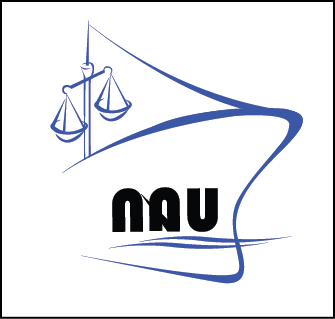NVOCC would generally load their containers with feeder operators either on “use” or on “slot chartered” basis. With respect to loading on “use” basis, unless there are contractual terms specifically agreed prior to loading, the Bills of Lading issued by the feeder operator would normally evidence the terms of the contract of carriage. For “slot chartered” basis, feeder operators and NVOCC’s would be bound by the terms of the slot charterparty in place.
This article is the first part in a 2 part article – the first part will touch on the entitlements of NVOCC’s to exclude and / or limit liability as provided under the Hague and / or The Hague Visby Rules while the second part will touch on the various issues arising in the defence of cargo claims both under “use” and on “slot chartered” basis.
- The first question we would need to answer is whether a contractual carrier, such as NVOCCs, fall within the definition of “carrier” as defined in The Hague Rules or The Hague Visby (collectively known as the “Rules”).
Art 1 (a) of the Rules states “carrier” includes the owner or the charterer who enters into a contract of carriage with a shipper. Further Art.1 (b) defines “contract of carriage” applies only to contracts of carriage covered by a bill of lading or any similar document of title…
Although NVOCC may be charterers of the vessel, it is quite possible for them to also issue their own Bills of Lading without any chartering involved. In the circumstances, the question would be as to whether NVOCC’s who do not charter fall within the definition? It is submitted that the definition provided in Art.1(a) of the Rules is not restrictive and therefore would also apply to parties who issue such documents but who may not necessarily be the owners or the charterers of the vessels. - Art III r1 of the Rules provide for an obligation on the carrier to exercise due diligence at the beginning of the voyage to provide a seaworthy ship (“The carrier shall be bound before and the beginning of the voyage to exercise due diligence to –
(a) Make the ship seaworthy
(b) Properly man, equip and supply the ship
(c) Make the holds, refrigerating and cool chambers, and all other parts of the ship in which goods are carried, fit and safe for their reception, carriage and preservation”)
In the case of NVOCC who load on third party vessels, what would be the meaning of the “due diligence”?
In The Muncaster Castle, the House of Lords held the carrier liable for breach of the obligation to exercise due diligence even though there had been no negligence on the part of the carrier but instead was the negligence on the part of the firm engaged by the carrier. In this case, the House of Lords stated “…the shipowner’s obligation of due diligence demands due diligence in the work of repair by whomsoever it may be done”. This therefore suggests that irrespective of the fact that NVOCC is not involved in the actual operations of the vessel, they would be liable for any negligence of the actual carrier. - Article IV r1 of the Rules deals with the Rights and Immunities of the carrier and states:
“Neither the carrier nor the ship shall be liable for loss for or damage arising or resulting from unseaworthiness unless caused by want of due diligence on the part of the carrier to make the ship seaworthy, and to secure that the ship is properly manned, equipped and supplied, and to make the holds, refrigerating and cool chambers and all other partes on the ship in which goods are carried fit and safe for their reception, carriage and preservation in accordance with the provisions of paragraph 1 of Article III. Whenever loss of damage has resulted from unseaworthiness, the burden of proving the exercise of due diligence shall be on the carrier or other person claiming exemption under this article.”
Art IV r2 goes on to provide a list of 17 exemptions (a-q) available to the carrier. - In order to exclude liability as provided under Art IV r2, the carrier must first prove that they exercised due diligence to make the vessel seaworthy as was pointed out by the Privy Council in Maxine Footwear Co., Ltd v Canadian Government Merchant Marine where it was declared “ Art III r1 is an overriding obligation. If it is not fulfilled and the non-fulfillment causes the damage, the immunities of Art IV cannot be relied on. This is the natural construction apart from the opening words of Art III r2. The fact that the rule is made subject to the provisions of Art IV and r1 is not so conditioned makes the point clear beyond argument”.
Hence, if NVOCC’s wish to exclude liability as provided under Art IV r2 of the Rules, they must prove that the actual carrier exercised due diligence at the beginning of the voyage to make the vessel seaworthy. This may indeed be difficult considering that actual carriers may not cooperate, particularly, when they (actual carriers) have failed in their duty to exercise due diligence.
In the case of big lossess, NVOCC’s could independently engage surveyors to investigate the circumstances of the loss. However, as it usually happens, the NVOCC may only becomes aware of the loss after discharge of the container and therefore may miss the opportunity to engage a surveyor / other parties to investigate the circumstances of the loss. In these cases, the NVOCC’s may have to rely on information passed on to them by the actual carriers (who may well decide to hold the relevant information till an action is initiated against them as provided under the contract). - With respect to limitation of liability, the wordings of the Hague and the Hague Visby Rules differ and are as follows:
- The Hague Rules:
Art IV r5 states “ Neither the carrier nor the ship shall in any event be or become liable for any loss or damage to or in connexion with goods in an amount exceeding 100 pounds sterling per package or unit, or the equivalent of that sum in other currency unless the nature and value of such goods have been declared by the shipper before shipment and inserted in the bill of lading”.
Art IX makes reference to the gold value by stating ” The monetary units mentioned in this convention are to be taken to be gold value. Those contracting States in which the pound sterling is not a monetary unit reserve to themselves the right of translating the sums indicated in this convention in terms of pound sterling into terms of their own monetary system in round figures...”
The application of Art IX would mean that if there is no reservation on the monetary unit, then the gold value of 100 pounds sterling would apply (we have discussed this isssue in our earlier article) - The Hague Visby Rules:
Art IV r5(a) states “ Unless the nature and value of such goods have been declared by the shipper before shipment and inserted in the bill of lading, neither the carrier nor the ship shall in any event be or become liable for any loss or damage to or in connection with the goods in an amount exceeding the equivalent of 666.67 units of account per package or unit or units of account per kilo of gross weight of the goods lost or damaged, whichever is the higher”.
Art IV r5(e) states “Neither the carrier nor the ship shall be entitled to the benefit of the limitation of liability provided for in this paragraph if it is proved that the damage resulted from an act or omission of the carrier done with intent to cause damage, or recklessly and with knowledge that damage would probably result”.
The differences between the Hague and the Hague Visby Rules are on the limitation amounts and further that under the Hague Visby Rules, carriers including NVOCC may be denied their entitlement to limit liability if it is proved that the damage was due to their reckless behavior (this obviously would be very difficult with the burden of proof on the cargo interests). The advantage of using the limitation defence is that NVOCC can avail this as of right and with no requirement that they first prove that they or their subcontractors (actual carriers in the case of contractual carriers) exercised due diligence to make the vessel seaworthy. - In our earlier article on “Should a container operator become a slot charterer?“, we had discussed on the possibility of a NVOCC being entitled to limit liability on the basis of the Limitation Conventions, provided they acted as Charterers and are not commenting on this aspect.
- The Hague Rules:
- Conclusion: Under the Rules, NVOCC’s are entitled to
- exclude liability as provided under Art IV r 2 of The Rules provided they are able to provide evidence as required under Art III r 1 and Art IV r 1.
- limit liability as of right except that in the Hague Visby Rules limitation can be broken due to the reckless behavior of the carrier (it is submitted that the reckless behavior of the actual carrier has no bearing to the limitation defence of the NVOCC’s).



Aly Chiman
Hello there,
My name is Aly and I would like to know if you would have any interest to have your website here at nau.com.sg promoted as a resource on our blog alychidesign.com ?
We are in the midst of updating our broken link resources to include current and up to date resources for our readers. Our resource links are manually approved allowing us to mark a link as a do-follow link as well
.
If you may be interested please in being included as a resource on our blog, please let me know.
Thanks,
Aly
admin
I am ok in being included as a resource on your blog as long credit is given to the source of the article.